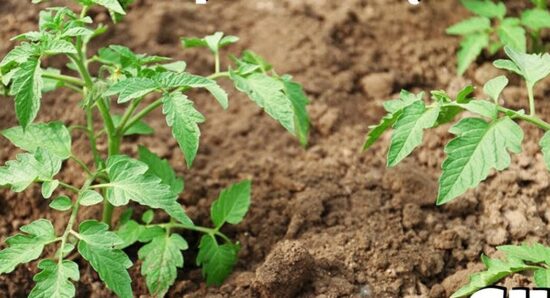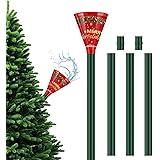Will stunted tomato plants recover? This is a question that many gardeners find themselves asking when faced with underdeveloped or struggling tomato plants. The good news is that there is hope! In this article, we will explore the various reasons why tomato plants may become stunted and provide practical solutions to help them bounce back and thrive.
From nutrient deficiencies to environmental factors, understanding the root cause is crucial for nurse these plants back to health. So, if you’re ready to revive your stunted tomato plants and enjoy a bountiful harvest, let’s dive in and get started.
Will Stunted Tomato Plants Recover?
Tomatoes are a popular and versatile fruit that many gardeners enjoy growing in their backyard. However, sometimes tomato plants can become stunted, resulting in slower growth, smaller fruits, or even complete failure to thrive.
This can be a frustrating experience for any gardener, but the good news is that stunted tomato plants can often recover with the right care and attention. In this article, we will explore the reasons behind stunted tomato plants and provide practical tips on how to help them recover and thrive.
Understanding the Causes of Stunted Tomato Plants
There are several factors that can contribute to stunted tomato plant growth. Understanding the underlying causes is crucial in implementing the appropriate solutions.
Here are some common reasons why tomato plants may become stunted:
1. Nutrient Deficiencies
Tomatoes require a balanced supply of essential nutrients to grow and develop properly. A lack of nutrients, such as nitrogen, phosphorus, potassium, or micronutrients, can result in stunted growth. Nutrient deficiencies can be caused by poor soil quality, improper fertilization, or imbalances in soil pH levels.
2. Watering Issues
Both overwatering and underwatering can lead to stunted tomato plants. Overwatering can suffocate the roots and cause root rot, while underwatering deprives the plants of the necessary hydration they need to grow. It is essential to maintain a consistent watering schedule and ensure proper drainage to prevent water-related issues.
3. Poor Soil Conditions
The quality and composition of the soil play a vital role in the growth of tomato plants. Soil that is compacted, lacking in organic matter, or poorly drained can hinder root development and nutrient uptake, resulting in stunted growth. Testing and amending the soil can help create a more favorable environment for tomato plants to thrive.
4. Pest and Disease Infestations
Tomato plants are susceptible to various pests and diseases, such as aphids, whiteflies, fungal infections, or viral diseases. These can weaken the plants and inhibit their growth, leading to stunted development. Regular monitoring and appropriate pest and disease management strategies are crucial for preventing and addressing infestations.
Read More: About The Pros and Cons of Planting Wildflowers: What You Need to Know
Reviving Stunted Tomato Plants
Now that we have identified the potential causes of stunted tomato plants, let’s explore the steps you can take to revive and encourage their recovery:
1. Evaluate and Adjust Nutrient Levels
Determining the nutrient deficiencies in your soil is the first step towards revival. Conduct a soil test to identify any nutrient imbalances or deficiencies. Once you have the results, you can amend the soil by adding organic matter or applying specific fertilizers to address the nutrient requirements of your tomato plants. Remember to follow the recommended application rates for the fertilizers and monitor the plants’ response.
2. Optimize Watering Practices
Proper watering is essential for the health and growth of tomato plants. Ensure that you are providing adequate water without overwatering or underwatering. Aim for consistent moisture levels in the soil, allowing it to dry slightly between waterings. Mulching around the base of the plants can help retain moisture and regulate soil temperature. Regularly monitor the soil moisture levels to adjust your watering schedule accordingly.
3. Improve Soil Quality
Addressing poor soil conditions is crucial for the recovery of stunted tomato plants. If your soil is compacted or lacks organic matter, consider aerating the soil and incorporating compost or well-rotted manure. This will improve soil structure, drainage, and nutrient availability. Additionally, ensure proper pH levels for optimum nutrient uptake by adjusting the soil acidity if necessary.
4. Manage Pests and Diseases
Identify and address any pest or disease issues promptly to prevent further damage and allow for plant recovery. Regularly inspect your tomato plants for signs of infestation, such as yellowing leaves, distorted growth, or visible pests. Use organic pest control methods whenever possible, such as introducing beneficial insects or using natural sprays. If a disease is detected, consider removing affected plants to prevent spreading and apply appropriate treatments.
5. Pruning and Training
Pruning and training your tomato plants can help redirect energy towards healthy growth and fruit production. Remove any damaged or diseased branches to improve airflow and prevent the spread of diseases. Additionally, consider providing support, such as stakes or cages, to guide the plants’ growth and prevent them from sprawling on the ground. This will optimize sunlight exposure and enable the plants to allocate resources more efficiently.
Preventing Stunted Tomato Plants in the Future
While it is possible to revive stunted tomato plants, prevention is always better than cure. Here are some preventative measures to ensure the healthy growth of your tomato plants:
1. Prepare the Soil
Before planting your tomato seedlings, prepare the soil by incorporating organic matter and ensuring proper drainage. Conduct a soil test to determine any nutrient deficiencies or imbalances. Amend the soil accordingly to provide an ideal environment for plant growth.
2. Choose the Right Varieties
Select tomato varieties that are well-suited to your growing region and climate. Consider factors such as disease resistance, growth habit, and yield potential. Choosing the right varieties will increase the chances of success and reduce the risk of stunted growth.
3. Practice Crop Rotation
Rotate your tomato plants annually to prevent the buildup of pests and diseases in the soil. Crop rotation helps break the life cycles of pests and pathogens, reducing the risk of infestations and promoting healthier plant growth.
4. Monitor and Address Issues Early
Regularly inspect your plants for any signs of nutrient deficiencies, pests, or diseases. Promptly address any issues that arise to prevent them from escalating and affecting the overall health of your tomato plants.
5. Provide Adequate Support and Care
Properly support your tomato plants with stakes, cages, or trellises to encourage upward growth and optimize sunlight exposure. Monitor watering needs, provide necessary nutrients, and maintain a clean garden environment to ensure your tomato plants have the best chance of thriving.
By implementing these preventative measures and taking corrective actions when necessary, you can minimize the risk of stunted tomato plants and enjoy a bountiful harvest.
Remember, gardening is an ongoing learning process, and not every plant will perform perfectly. Don’t be discouraged if you encounter stunted tomato plants. With patience, care, and the knowledge gained from this article, you can revive your plants and set them on the path to recovery.
Read More: About How to Get Big Pothos Leaves?
Frequently Asked Questions (FAQs)
To help your stunted tomato plants recover, ensure they receive adequate sunlight, water, and nutrients. Remove any competing weeds and provide support for the plants if needed. Prune or pinch off any yellow or diseased leaves, and consider using organic fertilizers or compost to boost their growth.
While some stunted tomato plants may recover on their own with optimal growing conditions, it is generally recommended to provide support and care to aid their recovery. Taking appropriate steps to address the underlying issues will increase their chances of bouncing back.
Stunted tomato plants can be caused by various factors, including insufficient sunlight, poor soil quality, inadequate watering, nutrient deficiencies, pests and diseases, overcrowding, and extreme temperatures. Identifying the specific cause can help in implementing the appropriate remedies.
The recovery time for stunted tomato plants can vary depending on the severity of the stunting and the care provided. With proper attention to their needs, it may take a few weeks to a couple of months for the plants to regain their vigor and start showing signs of recovery.
Transplanting stunted tomato plants to a new location is not recommended as it can further stress the plants. It is best to focus on improving the existing growing conditions, such as soil quality, sunlight exposure, and watering practices, to promote their recovery.
Stunted tomato plants typically require consistent and adequate watering. The frequency of watering depends on various factors, including weather conditions and soil moisture levels. As a general guideline, aim to provide about 1-1.5 inches of water per week, ensuring the soil is evenly moist but not waterlogged.
Yellow leaves on stunted tomato plants can indicate nutrient deficiencies or disease. To save the plants, it is important to address the underlying issues. Adjusting the nutrient levels in the soil, using organic fertilizers, and treating any diseases promptly can help improve the health of the plants and stimulate recovery.
While it may not be possible to completely eliminate the risk of stunting in tomato plants, you can minimize the chances by providing optimal growing conditions. Ensure they have access to sufficient sunlight, provide well-draining and nutrient-rich soil, water consistently, and regularly monitor for pests and diseases. Taking preventive measures can significantly reduce the likelihood of stunted tomato plants.
Final Thoughts
Stunted tomato plants can indeed recover under the right conditions. To help these plants bounce back, it is essential to address the underlying causes of stunted growth. Proper watering, fertilization, and soil preparation are key factors in providing the necessary nutrients and environment for recovery. Pruning and removing affected leaves or branches can also stimulate new growth.
Additionally, providing ample sunlight and ensuring adequate support for the plants can aid in their recovery. With proper care, stunted tomato plants have the potential to regain their vigor and thrive once again. So, will stunted tomato plants recover? With the right care and attention, the answer is a resounding yes.
Auto Amazon Links: No products found.
IPOOLTENG Christmas Tree Watering Funnel 3 Tube 1 Funnels 40 Inch - 3 Section Plastic Christmas Tree Funnel Waterer, Long Funnels for Watering Trees, Best Gifts for Your Parents to Water Tree
$15.53 (as of December 4, 2025 15:26 GMT +00:00 - More info- Product prices and availability are accurate as of the date/time indicated and are subject to change. Any price and availability information displayed on [relevant Amazon Site(s), as applicable] at the time of purchase will apply to the purchase of this product.
Christmas Tree Watering Funnel, Real Christmas Tree Water Long Funnel About 40 Inch, Trees Watering System for Water Indoor Outdoor
$15.99 (as of December 4, 2025 15:26 GMT +00:00 - More info- Product prices and availability are accurate as of the date/time indicated and are subject to change. Any price and availability information displayed on [relevant Amazon Site(s), as applicable] at the time of purchase will apply to the purchase of this product.
Christmas Tree Watering Funnel-39 Inch Adjustable 3-Section Long Funnel Spout Funnel Watering System Xmas Plant Watering Tool for Large Indoor Outdoor Plants
$14.59 (as of December 4, 2025 15:26 GMT +00:00 - More info- Product prices and availability are accurate as of the date/time indicated and are subject to change. Any price and availability information displayed on [relevant Amazon Site(s), as applicable] at the time of purchase will apply to the purchase of this product.
LANNEY 48.6 Inch Christmas Tree Watering Funnel, Extra Long Xmas Tree Waterer Spout with Metal Tube, Christmas Watering Device System Tool for Indoor and Outdoor Real Live Plant
$13.99 (as of December 4, 2025 15:26 GMT +00:00 - More info- Product prices and availability are accurate as of the date/time indicated and are subject to change. Any price and availability information displayed on [relevant Amazon Site(s), as applicable] at the time of purchase will apply to the purchase of this product.
Christmas Tree Watering System, 50 Inch Long Christmas Tree Watering Funnel Tool for Xmas Plant Watering Indoor Outdoor Large Plants
$16.99 (as of December 4, 2025 15:26 GMT +00:00 - More info- Product prices and availability are accurate as of the date/time indicated and are subject to change. Any price and availability information displayed on [relevant Amazon Site(s), as applicable] at the time of purchase will apply to the purchase of this product.
Snow Joe Premium Enviro Blend Ice Melt, Green-Coated Deicer Crystals, 50 lb - Safer Melter for Vegetation, Concrete & Metals w/ Anti-Corrosion Calcium Magnesium Acetate
$32.97 (as of December 5, 2025 17:01 GMT +00:00 - More info- Product prices and availability are accurate as of the date/time indicated and are subject to change. Any price and availability information displayed on [relevant Amazon Site(s), as applicable] at the time of purchase will apply to the purchase of this product.
Muddy Mat® Shown on TV Super Absorbent Microfiber Dog Door Mat for Muddy Paws, Non-Slip Washable Pet Rug, Quick Dry Chenille Entryway Carpet, Machine Washable Indoor Outdoor mat, Grey 30"x19"
$19.95 (as of December 5, 2025 17:01 GMT +00:00 - More info- Product prices and availability are accurate as of the date/time indicated and are subject to change. Any price and availability information displayed on [relevant Amazon Site(s), as applicable] at the time of purchase will apply to the purchase of this product.
Cuisinart 6.5" Cast Iron Smashed Burger Press, Round Flat Edge Grill Press for Crispy Smash Burgers, Burger Tool for Grill and Griddle Accessories, for BBQs and Tailgates
$24.99 (as of December 5, 2025 17:01 GMT +00:00 - More info- Product prices and availability are accurate as of the date/time indicated and are subject to change. Any price and availability information displayed on [relevant Amazon Site(s), as applicable] at the time of purchase will apply to the purchase of this product.
Zevo Flying Insect Trap Official Refill Cartridges - Fits Both Zevo Trap & MAX Indoor Fly Trap - Authentic Trap+Lock Technology to Catch Gnats, House & Fruit Flys (4 Official Refill Cartridges)
$13.47 (as of December 5, 2025 17:01 GMT +00:00 - More info- Product prices and availability are accurate as of the date/time indicated and are subject to change. Any price and availability information displayed on [relevant Amazon Site(s), as applicable] at the time of purchase will apply to the purchase of this product.
OLANLY Dog Door Mat for Muddy Paws 30x20, Absorbs Moisture and Dirt, Absorbent Non-Slip Washable Doormat, Quick Dry Chenille Mud Mat for Dogs, Entry Indoor Entryway Carpet for Inside Floor, Grey
$9.99 (as of December 5, 2025 17:01 GMT +00:00 - More info- Product prices and availability are accurate as of the date/time indicated and are subject to change. Any price and availability information displayed on [relevant Amazon Site(s), as applicable] at the time of purchase will apply to the purchase of this product.











